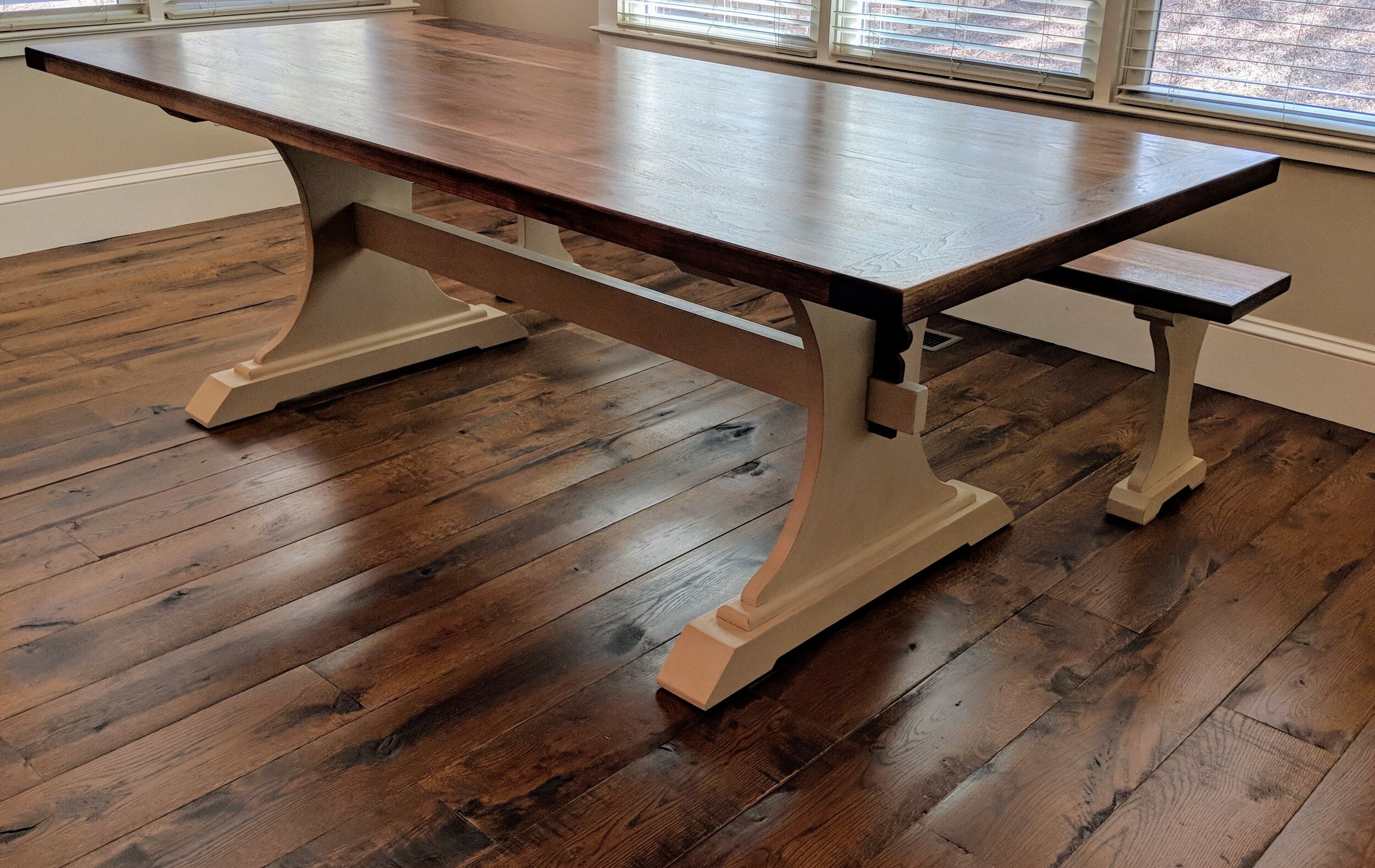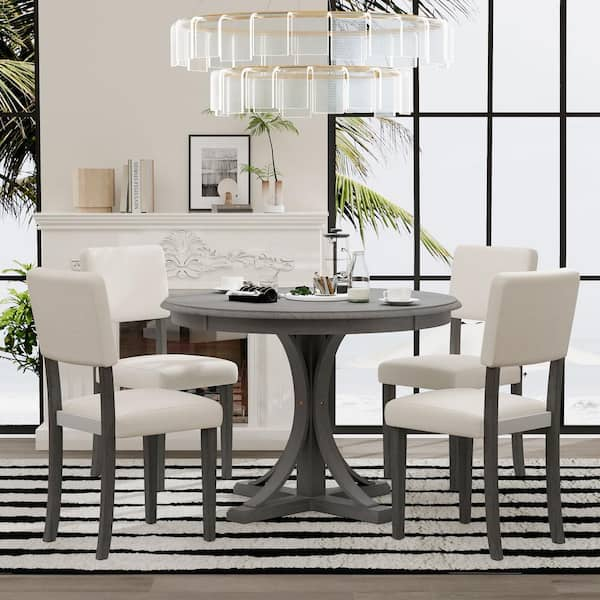How to Maintain and Care for Your Dining Room Table Legs
How to Maintain and Care for Your Dining Room Table Legs
Blog Article
From Typical to Modern: Find the Perfect Dining-room Table Legs for Your Design
While traditional layouts such as cabriole and turned legs evoke a feeling of classic sophistication, contemporary designs like hairpin and geometric choices provide an opportunity for striking visual passion. As you think about these components, the question stays: just how can you seamlessly incorporate these diverse leg designs to create a harmonious eating experience?
Comprehending Table Leg Styles
The selection of dining-room table leg styles can dramatically affect both the aesthetic appeals and capability of the room. Each leg design contributes special aesthetic aspects and functional attributes, providing to varied layout choices and use needs. Understanding these styles is critical for selecting the best table that aligns with your general indoor design vision.
For circumstances, conical legs provide a clean, traditional look that can enhance a room's sophistication, while pedestal bases provide security and take full advantage of legroom, making them optimal for smaller sized spaces. Hairpin legs, a hallmark of mid-century modern-day design, present an industrial panache, permitting an airy, open feel. Trestle legs stimulate rustic appeal, giving robust support and a feeling of eternity.
Moreover, the selection of materials plays a substantial duty. Wooden legs can bring heat and texture, whereas metal options usually share a streamlined, contemporary ambiance. Inevitably, recognizing table leg styles is important for creating a natural dining location that mirrors individual design while making certain practicality and comfort. By thoughtfully taking into consideration these aspects, you can enhance both the useful and visual appeal of your dining area.
Traditional Table Leg Options
When selecting dining-room table legs, typical alternatives usually symbolize classic sophistication and craftsmanship. These designs mirror a rich heritage and a dedication to high quality, making them ideal for those who value timeless looks.
Among one of the most renowned standard leg styles is the cabriole leg, identified by its elegant rounded shape. This design often features attractive makings and is most typically discovered in Queen Anne and Chippendale furniture. One more preferred choice is the turned leg, which boasts a series of smooth, rounded forms that provide a classic look while maintaining security.
Additionally, the straight leg, while easy, provides a tough and basic structure that can mix flawlessly with a selection of tabletop styles. For those drawn to ornate describing, claw-and-ball feet legs stimulate a sense of splendour and can offer as a sensational centerpiece in any kind of eating room.
Last but not least, stand bases, although not purely legs, offer an alternative typical choice that enables ample legroom and can be wonderfully sculpted. Each of these typical leg styles adds to the general atmosphere of an eating area, weding feature with aesthetic charm.

Modern Table Leg Styles
Modern table leg styles provide a varied series of designs that stress clean lines and ingenious materials. These designs frequently prioritize capability while working as striking focal points within a dining room. Minimalist aesthetics are widespread, with legs crafted from products such as steel, glass, and crafted wood, which add to a ventilated and contemporary feeling.
One prominent design is the barrette leg, identified by its slender, tapered find out this here structure that gives stability without overwhelming the table top (dining room table legs). This style is commonly found in mid-century modern furnishings and can effortlessly match various dining table shapes. One more fad is making use of geometric forms, where legs may take on unbalanced or angular forms, including aesthetic passion and a touch of artistry

Mixing Styles for Distinct Spaces
Frequently, property owners seek to create one-of-a-kind eating areas that show their personal design by mixing different style elements. This approach permits the unification of varied aesthetic appeals, leading to a harmonious yet distinct setting. For example, matching a rustic wood table with streamlined, contemporary metal legs can develop a distinctive comparison that elevates the area's general appeal.
Additionally, incorporating vintage see post table legs with contemporary table tops can evoke a feeling of history while keeping a contemporary sensibility. Such mixes not only display individual preference but additionally encourage creative thinking, enabling homeowners to curate an area that feels both individual and inviting.
Shade plays a critical function in this mixing process; choosing table legs that complement or contrast with the existing color pattern can enhance aesthetic interest. Whitewashed legs can soften the daring of a dark table surface, developing a balanced visual.
Tips for Choosing the Right Legs
Choosing the right table legs is important for achieving both performance and visual appeal in your eating space. Begin by thinking about the total design of your room. Standard settings profit from legs that include intricate carvings or transformed designs, while modern spaces might require streamlined, minimal styles.
Next, evaluate the elevation and security of the legs. dining room table legs. Standard dining tables range in between 28 to 30 inches in elevation, so ensure the legs complement this measurement for comfort. Furthermore, durable products, such as wood or steel, can boost security and long life
Evaluate the leg shape as well-- options include right, tapered, or stand styles. Straight legs offer a traditional look, while tapered legs can add a touch of beauty. Pedestal bases offer adequate legroom and are excellent for smaller sized rooms.
Verdict
In recap, choosing the perfect eating area table legs needs careful factor to click this link consider of both modern and traditional designs. By harmonizing leg design, elevation, and material with the overall design, a cohesive and welcoming ambience can be accomplished.
The variety of eating space table leg designs can considerably influence both the aesthetic appeals and functionality of the area. Ultimately, recognizing table leg styles is crucial for producing a natural dining location that reflects individual style while making sure practicality and convenience.One of the most iconic standard leg designs is the cabriole leg, defined by its elegant curved form. Straight legs supply a traditional appearance, while tapered legs can add a touch of elegance.In recap, choosing the optimal dining area table legs requires cautious factor to consider of both modern-day and conventional designs.
Report this page